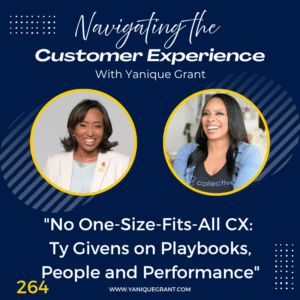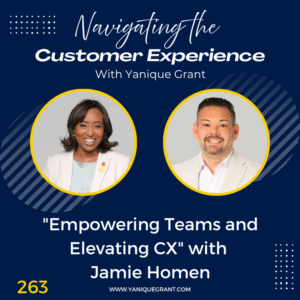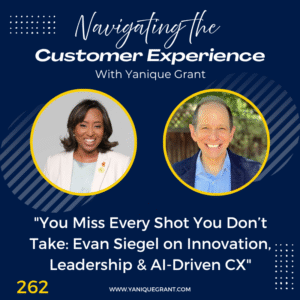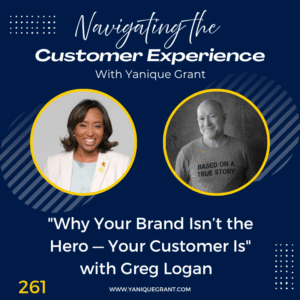Dr. Fader is the Professor of Marketing Wharton School of University of Pennsylvania. Professor Fader’s expertise centers around the analysis of behavioral data to understand and forecast customer shopping/purchasing activities. He works with firms from a wide range of industries, such as consumer packaged goods, interactive media, financial services, and pharmaceuticals. Managerial applications focus on topics such as customer relationship management, lifetime value of the customer, and sales forecasting for new products. Much of his research highlights the consistent (but often surprising) behavioral patterns that exist across these industries and other seemingly different domains.
Many of these cross-industry experiences have led to the development of the Wharton Customer Analytics Initiative (https://www.wharton.upenn.edu/wcai/), a new research center that serves as a “matchmaker” between leading-edge academic researchers and top companies that depend on granular, customer-level data for key strategic decisions.
Professor Fader believes that marketing should not be viewed as a “soft” discipline, and he frequently works with different companies and industry associations to improve managerial perspectives in this regard. His work has been published in (and he serves on the editorial boards of) a number of leading journals in marketing, statistics, and the management sciences. He has won many awards for his teaching and research accomplishments.
Dr. Fader is the author of Customer Centricity: Focus on the Right Customers for Strategic Advantages.
Questions:
- Tell us a bit of your journey
- How do you feel about Customer Service on a global level?
- What is Customer Lifetime Value? Why is it important for a business to understand what that means?
- What’s the difference between Customer Friendly vs. Customer Centricity? (as described in the book “Customer Centricity”)
- Traditional Segmentations vs. True Segmentation
- How can companies adjust with customers who want Instant Gratification specifically the Millennials?
- Leadership and getting them to understand there is a great connection between Customer Experience and their bottom line?
- What is really Customer Relationship Management?
- How do you stay motivated?
- What is the one online resource, tool, website or app that you absolutely cannot live without in your business?
- Are there any books that have had the greatest impact on you?
- What’s the one thing that is going on in your life that you are really excited about, something that you are either working on to develop yourself or your people?
Highlights
- Dr. Fader expresses how fulfilling his journey has been from being an IT Major at MIT. He further states this journey is one that he would have never imagined as he never thought he would ever wake up saying “I wanna be a Marketing Professor” and quite to the contrary – he says that he’s a Math Geek – he enjoys predicting things in particular granular things. He says it is rather fun to predict….which customer is going to buy, when, what and for how much and how often are they going to come back!
- Dr. Fader says that during his undergraduate programme at MIT, one of his professors just observing how he loved predicting stuff in sports and music…suggested “You ought to throw some of that predicting stuff in Marketing.” He says 30 plus years later, he has never been happier because it is such a natural domain for someone who loves math and predictions. He further says the field is just waking up to appreciate the needs for these kinds of technical skills and equally important strategic implications that arise from that.
- Dr. Fader states he is in two minds on Customer Service – he says that he believes that it is way better than it was decades ago and it has improved. He says companies genuinely care more, as a consumer it is more fun and interesting. On the other hand he believes that some companies are going a little bit too far. They are not going to get a good ROI on the investments of customer service as they are rolling out the red carpet too broadly, too eagerly without being very careful to understand what impact these customer service activities are having on the value of their customers. They are taking a “one size fits all”, “Customer is Always Right” approach.
- Dr. Fader states frankly that he believes that is irresponsible as the companies should really not be doing all different kinds of customer experience activities without understanding in a precise manner the impact that it is having on the value of the customer they are serving.
- Dr. Fader says that while everyone should know the ins and out of Customer Lifetime Value (CLV), however, he states there are a couple of problems with that as he believes it is like “Cheap Talk” it seems companies are checking a box instead of really, truly, building the business in a formal, strategic manner around CLV. He further stated the way companies are doing the calculations if they are doing it at all…..tends to be pretty poor. He further explains, for instance the companies will find proxies for CLV, they might look at historic profitability, Net Promoter Score (NPS), even credit scores, FICO score and just use that as a proxy for CLV! Dr. Fader says, “I’m not saying that those are bad metrics, but they are not CLV and if you are going to be building strategies around it then you had better be calculating it the right way.” Dr. Fader says, “Once you calculate it the right way, validate it, understand the underlying components of it…..then that will drive so many strategic decisions not only when it comes to Customer Service but even when it comes to deciding which products to launch, which regions to go into, which competitors to worry about etc.” Dr. Fader says it has far reaching strategic implications.
- Dr. Fader in explaining the difference between being Customer Friendly vs. Customer Centricity states that part of it he believes is his own fault as he should have come up with something more unique for his book title because he thinks Customer Centricity makes it sound more like…”Let’s just be nice to The Customer, The Faceless/Nameless Entity who happens to buy our products and services..…that’s the Customer Friendliness part.” Dr. Fader says he looks at all of these great stories of world class customer service such as Nordstrom giving a customer money back for tires that he did not buy there and wonders..… There are lots of companies that put Customer Service as Job #1 and reinforcing what he said earlier, Dr. Fader says that is often a mistake! Dr. Fader says that you have to understand which customers you are being friendly with and what impact that’s going to have on them and what other kinds of customers that is going to attract. A specific example, Dr. Fader says he looks a lot of companies that are hiring an army of people to monitor Twitter and everytime they see someone tweet about their company, if they are having some problem, they will get the SWAT team out there to fix whatever the problem is for the customer and it sounds so nice! Dr. Fader says in many, many cases – it is a complete waste of money! Dr. Fader says what companies need to do is when someone is tweeting about them for better or worse – companies need to understand the value of that customer and use that; kind of as a way of doing Triage…..making sure that the really valuable customers if they are having a problem – we are going to handle it first and the lower value customers…..(don’t ignore them or chase them away) but if they have to wait, even if they have to suffer a little bit….that’s okay! Dr. Fader says companies should be always on call for those high value customers. So it is essential for companies to sort out this generic, one size fits all, we will be nice to everyone kind of Customer Service vs. Service Activities that are closely tied to the value they are going to create.
- Dr. Fader states that customer segmentation is not the same as we learnt in our Marketing 101 classes as Dr. Fader says in most cases companies are segmenting their customers on the basis of observable variables such as demographics, where they live, media habits or other observable traits. Dr. Fader plainly states, “I’m not saying there is anything wrong with that….but it’s ineffective.” Dr. Fader says the best way to segment is on the basis of Customer Lifetime Value (CLV). “So let’s pull out our magic wand and figure out the forward looking value of each of our customers and then break them up into groups/percentiles, top 10 percent, 20 percent and all the way down to the bottom 10 percent and then let’s understand how these customers are different from each other. Then after doing that we can layer on the demographics and the media habits after we have done the segmentation as way to profile to the different value tiers as opposed to the original way of creating segments in the first place. Once we see these differences among our customers – this new data will guide a lot of the activities that we will be doing in Customer Service.”
- Dr. Fader in response to Millennials being the bulk of the work force and wanting instant gratification stated he would respond in two parts. He firstly stated that he does not like this whole Millennial thing as he does not like or agree with that kind of stereotyping as he believes that it is wrong and ineffective! Dr. Fader says to paint with the same brush on people who are born between a certain set of years is a terrible, terrible mistake and companies need to stop doing it which goes back into what Dr. Fader said earlier – companies should not be segmenting customers based on when they were born and instead segment them based on what they will be worth in the future. With reference to answering the group of persons between the ages of 19 and 35 years old, Dr. Fader says there will be tremendous heterogeneity within that group, there will be some who absolutely follow that stereotype, there will be some who resemble the “Baby Boomers” like Dr. Fader (as he jokingly refers) and other people within that same group who aren’t so lazy and spoilt.
- Dr. Fader says there are some customers out there who are going to be needier, who are never going to be happy, some customers that when you give them one thing they are going to want more and more! Dr. Fader says that’s where CLV comes in as the CLV will help companies understand the value of these customers and the cost of delivering on that value as well as acquiring and maintaining customers like that. Dr. Fader reiterates that’s one of the reasons why the second part of his book is titled “Focus on the Right Customer for Strategic Advantage.”
- Dr. Fader says focus on the right customers for Strategic Advantage – as a business you have to pick and choose as some customers will be more valuable than others and as a business you really need to invest to figure that out and if you don’t – you will be wasting a lot of money on some low value customers. Dr. Fader says there a lot of people out there that are kind of afraid of CLV as they think it’s kind of “scary” and “mathy” and they are not sure what they would do with it, it’s kind of this great unknown – so they just throw themselves into Customer Service and Customer Experience and Customer Journey and believe if they do all of that really good then it absolves them of really doing CLV. Dr. Fader says there is a beautiful interplay between the two because companies cannot do Customer Service, Customer Experience and Customer Journey unless they are comfortable with and cognizant of CLV.
- In response to our question on Leadership and getting the company owners and leaders to understand the great importance of Customer Experience to the bottom line – Dr. Fader responded that is why he wrote his book “Customer Centricity: Focus on the Right Customers for Strategic Advantage.” Dr. Fader says he has been developing these CLV models for years and years and years going around to companies preaching how this can really help their business and the company would respond saying, “We have all these geeks and nerds over in analytics….go and talk to them because we have a business to run here, I’m the CMO….I’m too busy for that kind of non-sense.” Dr. Fader said he found all of that rather frustrating. He further stated that a lot of companies are truly missing the mark. Dr. Fader said he wrote his book Customer Centricity as a call to action, as a wake-up call to get get C-Level people to really appreciate the strategic importance, the competitive imperative of really understanding Lifetime Value and all of the different ways that it can be leveraged.
- Dr. Fader says that he is a number cruncher but a number cruncher that’s on a mission to get the C-level people to wake up and smell the CLV!
- Dr. Fader says that it is pleasing to know that companies such as Starbucks have wised up and made a 180 saying that we get it now and we have to focus on the CLV, not all our customers are the same.
- Dr. Fader said CRM was out there too early when it was originally released in the MarketPlace and many businesses did not know what to do with it. He says now because of the stagnation of product centricity, globalization, the millennials and all these different reasons….Customer Centricity is more understood and much more necessary and now it’s finally time for the CRM Revolution.
- Dr. Fader speaks about a book that was very influential for him when writing his own book “Angel Customers and Demon Customers” by Larry Selden and Geoffrey Colvin. The book makes reference to a bank that had a customer that applied for Mortgage services and the experience was as if the bank and the mortgage section were two separate entities! There was no integration with the teams that dealt with regular day to day banking. The truly Customer Centric companies truly understand the 360 approach of viewing customers not just from one activity but all activities. Dr. Fader says banking has been one of the more impressive sectors that have woken up to really try new and innovative ways to understand their customers.
- Dr. Fader further states that he wants everyone in the company thinking of the customer and the customer value regardless of where they are in the business productions, sales or customer service.
- Dr. Fader states another popular thing in business now is “Customer Based Corporate Valuation”, because if you are a company where the vast majority of your revenue comes from customers and you can figure out the CLV from the present customers as well as the customers that you are likely to acquire in the future and you add all that stuff up – that’s the value of the firm! Dr. Fader says he has been doing that with companies – checking the CLV and matching it back with Wall Street’s value of the company and matching them up and the reason he is doing it because he wants the CFO to really look at it and see the direct co-relation between CLV and the bottom line! Dr. Fader said this is actually more accurate, more timely, more actionable, more valuable than the top down methods of valuation. Dr. Fader says he wants CLV to be this Gold Standard Metric that everyone in the organization can appreciate so there will be less battles in a company over these different kinds of metrics.
- Dr. Fader says he really loves what he does and he’s building all of these predictive models and he knows in a small way he’s changing the world and that brings him great joy! Dr. Fader says he loves the teaching, research and the companies that he deals with for research. He really believes that he has been very fortunate and he works across every sector imaginable!
- Dr. Fader says his number one app is Twitter – he further says it is very much where he gets all of his updates and connections. He really loves Twitter. Dr. Fader further states on a side note of apps and websites he loves – he created a website called coolnumbers.com a website dedicated to the world’s greatest collection of dollar bills with interesting serial numbers. He says if you have too much time on your hands you can head on over to that website and put in any 8 digit number and it will tell you how cool it is on a 0-100 scale! Dr. Fader says that it is utterly pointless and there is no redeeming social value and it’s completely stupid but a simply nice outlet for someone who likes to crunch numbers. He comically says this is where he let’s his true geek hang out!
- Dr. Fader says he has a whole bunch of books he would recommend as being influential as he is an avid reader! He mentions “Consumer Behavior Models for Non-Statisticians” by Jerome Greene and he states Greene was a media researcher not an academic that went into some statistical and technical data that has been helpful to him and continues to be helpful for his students. He further mentioned another book – “How Brands Grow” by Byron Sharp as a Professor at the University of Australia. Dr. Fader says he highly recommends this book to everyone because the principles presented here are radical but they are supported by the kinds of models that Dr. Fader builds along with other people around the world and it is completely non-technical as it has mostly stories and principles.
- Dr. Fader is very excited about Zodiac – his new start up! He shares Zodiac (zodiacmetrics.com) is an online platform that bolts right on to a company’s transaction log system, sucks out their transaction log data, calculates all the CLV in real time and then injects them right back into their CRM system. Dr. Fader says he does not want to tell companies what to do, what experiments to run, which customers to go after – Dr. Fader just wants to give them the right ingredients for them to be able to do that. Dr. Fader wants to create that magic wand, that engine that will give companies one less excuse to not do the CLV thing.
- Dr. Fader also mentioned he’s already thinking of a follow up to his first book – the CLV Playbook – once more companies get to really understand and practice the true functions of CLV – this book would be their guide.
We would welcome a subscribe, rate and review for the show and also that the listeners can come hang out at Navigating the Customer Experience Community on Facebook. This is a private Facebook group for our listeners and past guests to come over share insights and industry trending topics and discussions on business and customer experience – click here!
INTERVIEW LINKS:
“Angel Customers and Demon Customers” by Larry Selden and Geoffrey Colvin
“Consumer Behaviour Models for Non-Statisticians” by Jerome D. Greene




